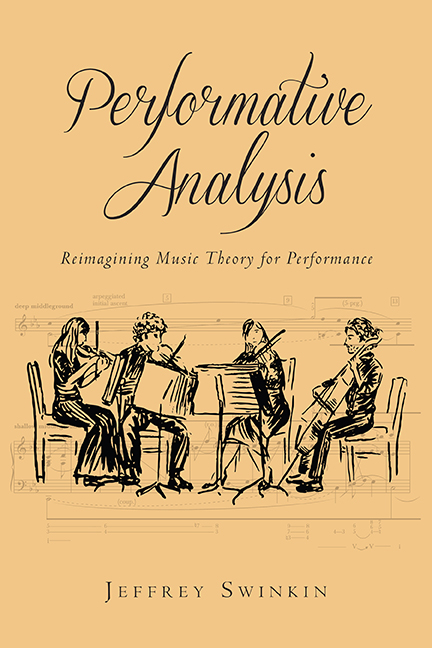2 - Two Interpretive Roles
Published online by Cambridge University Press: 09 June 2021
Summary
Having theorized analysis as an interpretive rather than a factual enterprise generally, I now home in on two interpretive functions of analysis in particular: first, analysis exposes ambiguities or, more generally, gaps in the text, serving them up to the performer; second, it offers metaphors for physical and emotional experience, which the performer embodies or expresses in some way. I will discuss the latter function primarily in regard to Schenkerian analysis.
Part 1: Ambiguity
Her autobiography, if such a thing were imaginable, would be, if such a thing were ever to be written, an assemblage of dark voids and unbridgable [sic] gaps… . She understood that if she was going to hold on to her life at all, she would have to rescue it by a primary act of imagination, supplementing, summoning up the necessary connections.
—Carol Shields, The Stone DiariesIser's “Gaps”
Interpretation thrives on questions and problems posed by a text, literary or musical. These preclude facile comprehension; they insure the artwork against passive consumption and ensure that we actively engage with the text. It is precisely these impediments to unproblematic flow—impediments highlighted by theories—that draw the interpreter in, that solicit her involvement. The foremost such impediment is ambiguity, which below I consider musically. But first, I expose the notion of textual chasms generally, returning once again to Wolfgang Iser.
For Iser, writing has to implicate reading in order to yield the intentional object that is the artwork. A text implicates reading, in part, by referring to objects incompletely, thus placing the onus on the reader to fill them in. Moreover, the text piques the reader's expectations, the fulfillment of which instantaneously yields new expectations. However, gaps in this implicationrealization flow are essential to the reading process, for otherwise the reader would have few signals as to the changes in perspective she must synthesize or negotiate. These incongruities beg the reader's attention and involvement; they require her to form some sort of gestalt, to strive for consistency in her interpretation. Yet the reader is constantly forming new gestalts as the text unfurls: the latent gaps within one gestalt compel the reader to form another gestalt, which does not replace the previous one but rather modifies it.
- Type
- Chapter
- Information
- Performative AnalysisReimagining Music Theory for Performance, pp. 42 - 72Publisher: Boydell & BrewerPrint publication year: 2017



